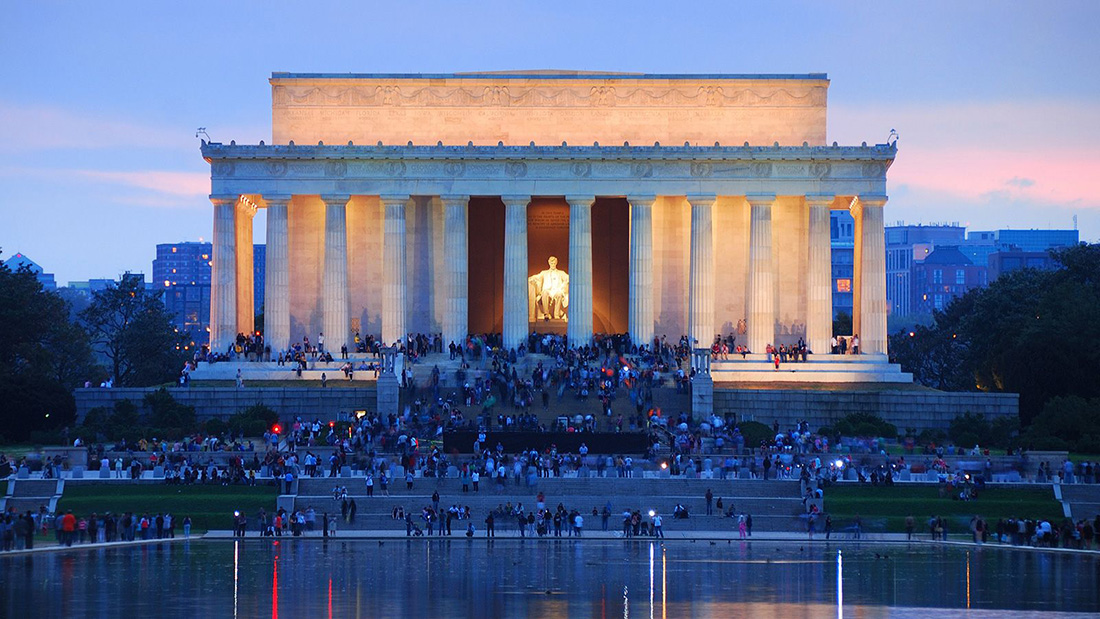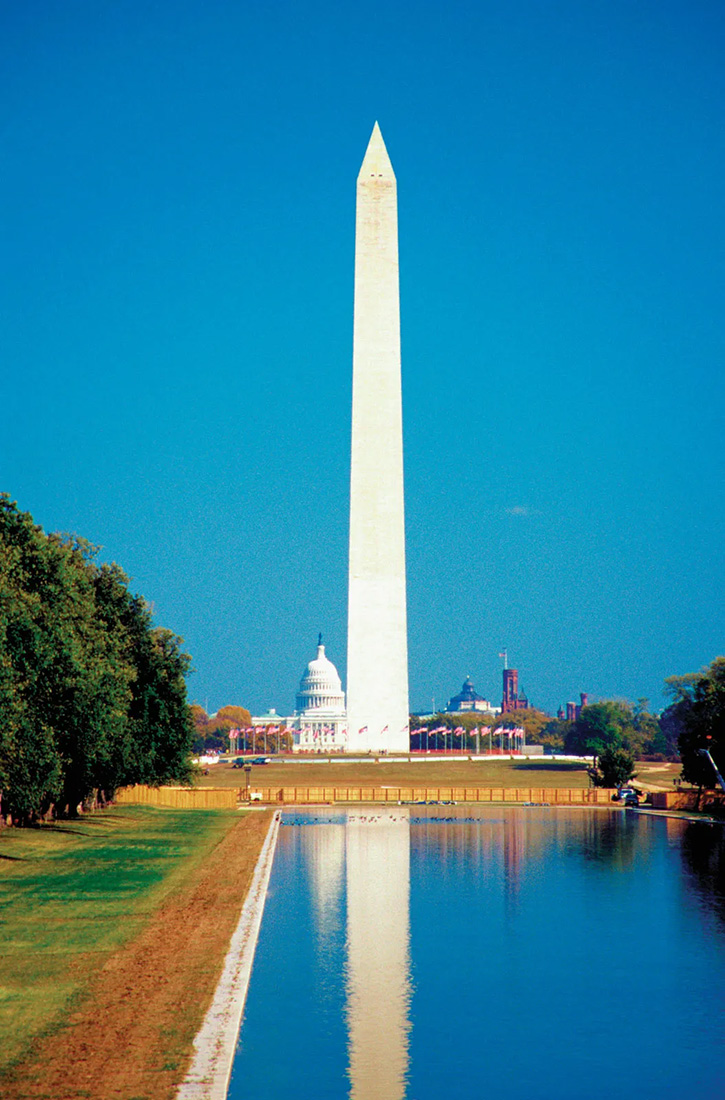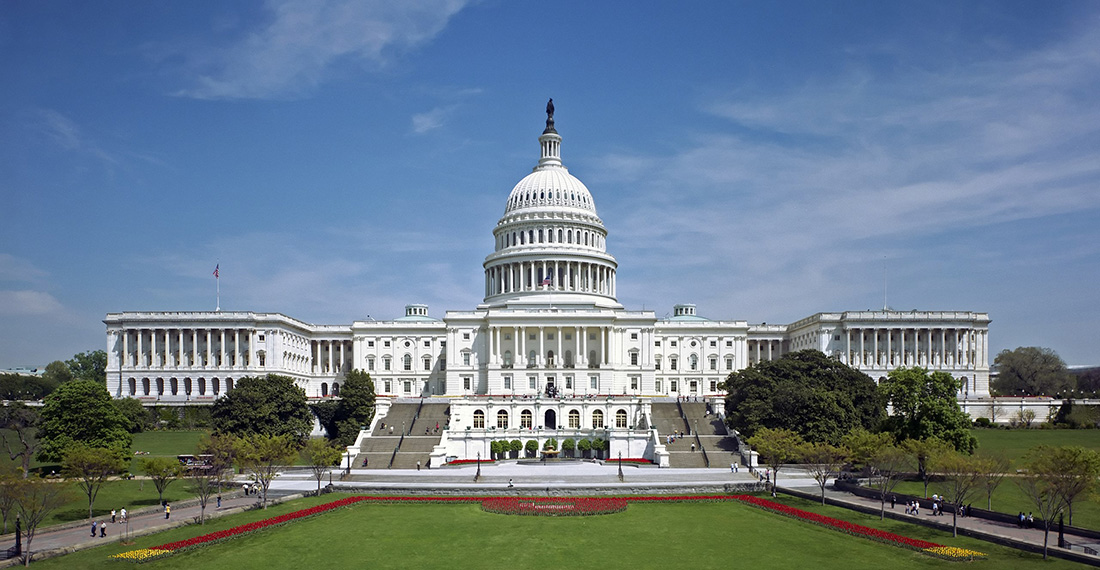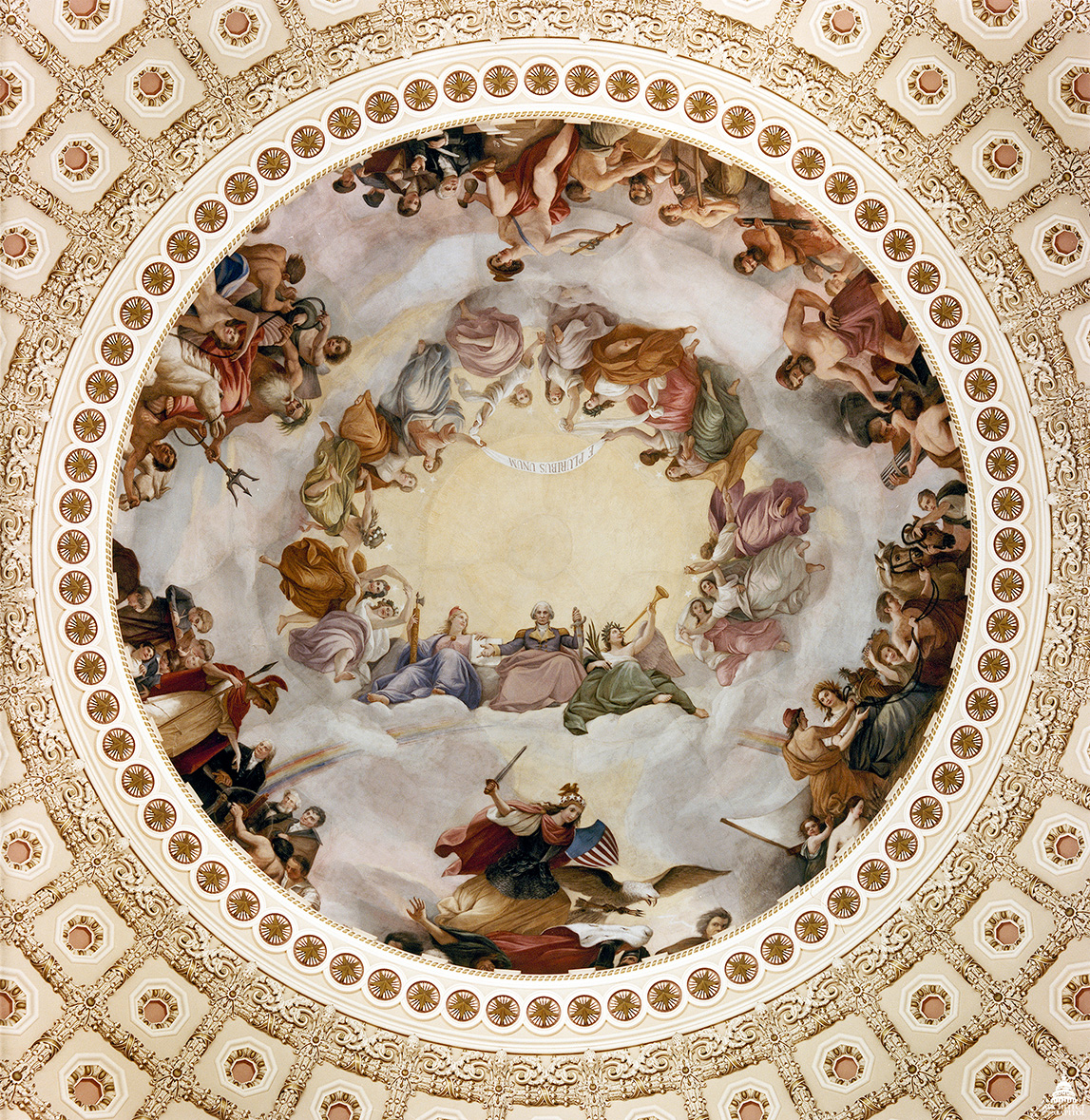Holding Up History: Three Iconic American Structures
Holding Up History: Three Iconic American Structures
Throughout American history, certain landmarks have come to symbolize the nation’s strength, creativity, and resilience. Among them, the Lincoln Memorial, the Washington Monument, and the Capitol Building stand out as powerful representations of America’s ideals. Behind these iconic structures lies incredible engineering that has pushed the boundaries of design and construction. In this blog, we’ll take a closer look at the engineering feats that made these monuments not only possible but enduring symbols of the nation’s ingenuity and ambition. Join us as we explore the remarkable designs and structural marvels of these celebrated landmarks in the heart of Washington DC!
The Lincoln Memorial

Image reference: https://www.cnn.com/travel/article/lincoln-memorial-100th-anniversary-washington
The Lincoln Memorial was designed by architect Henry Bacon to resemble a Greek Doric temple - a fitting tribute to a president who preserved the Union during its most divided time. Inside, Daniel Chester French’s 19-foot statue of Abraham Lincoln gazes toward the Reflecting Pool and Washington Monument, anchoring a space of national memory and unity. Surrounding him, 36 columns represent the states in the Union at the time of Lincoln’s death. Every architectural element was deliberately chosen to reflect stability, reverence, and permanence - values Lincoln himself embodied.
The memorial rests on land that was once marshy, requiring a carefully engineered foundation. Ground was broken on February 12, 1914, and construction was divided into two phases: a sub-foundation of 122 reinforced concrete piers driven into bedrock, and an upper foundation of additional piers joined by poured concrete arches that support the memorial floor. As the project progressed, the statue of Lincoln was enlarged to twice its original size to suit the scale of the chamber. In response, steel struts were installed beneath the floor to bear the increased weight. Though work slowed during World War I, it never stopped, and by May 1922, the structure was complete, aside from final touches on the Reflecting Pool and interior lighting.
Bacon’s material choices were equally symbolic. He selected stones from across the country to reflect the idea of reunification: Colorado marble for the exterior, Indiana limestone for interior columns and walls, Tennessee pink marble for the floor, and Georgia marble for the statue itself - crafted from 28 individual pieces. Massachusetts granite forms the lower steps and terrace walls, while Alabama marble tiles finish the ceiling. The inscriptions of the Gettysburg Address and the Second Inaugural Address, carved beneath murals on the north and south walls, serve as enduring reminders of Lincoln’s vision. Even today, the memorial stands not only as a marvel of architectural precision and craftsmanship but as a powerful national symbol where history is honored and justice continually called for.
Learn more here: Construction of the Lincoln Memorial National Park Service
The Washington Monument

Image reference: https://www.britannica.com/topic/Washington-Monument-Washington-DC
Piercing the D.C. skyline at 555 feet, the Washington Monument remains the tallest stone structure in the world and a powerful tribute to the nation’s first president. Its prominent location, where lines radiating south from the White House and west from the Capitol intersect, was originally designated in Pierre L’Enfant’s 1791 plan for the city. In 1833, the Washington National Monument Society was formed to bring this vision to life, declaring their goal to build a memorial “unparalleled in the world.” In 1845, after a decade of fundraising and design competition, architect Robert Mills’ bold plan was selected: a 600-foot obelisk surrounded by thirty 100-foot columns. Though only the obelisk would ultimately be built, the design captured a sense of strength rooted in ancient Egypt.
Construction beginning with laying the cornerstone started on July 4, 1848, and was attended by 20,000 people, including President Polk, former First Lady Dolley Madison, Eliza Hamilton (widow of Alexander Hamilton), Washington's Treasury Secretary George Washington Parke Custis, and future presidents like Lincoln and Buchanan.
Builders began with an 80-foot square step-pyramid foundation of blue gneiss, then slowly hoisted marble blocks skyward using pulleys and derricks (systems used for lifting and moving heavy objects). By 1854, the monument reached 156 feet, but political upheaval followed. A shift in leadership to members aligned with the Know-Nothing Party alienated donors, and funding dried up. Mills died in 1855, and for over two decades, the incomplete shaft stood as an awkward reminder of national disunity and stalled ambition, overshadowed by the coming Civil War and internal strife.
It wasn’t until the 1870s, in a postwar spirit of reunification, that Congress and the Army Corps of Engineers revived the project. Advances in engineering allowed for completion in 1884, though the final stones (slightly different in color) reveal the gap in construction. Remarkably, the monument is held together not by steel reinforcement but by its own immense weight and precision stacking, with gradually thinning walls rising from a massive base.
Engraved on the aluminum cap of the monument are key names and dates marking significant moments in its construction. On the east-facing side, which greets the morning sun, the Latin phrase “Laus Deo” appears, meaning “Praise be to God.”
From its storied foundation to the aluminum cap at its peak, the monument stands as both a literal and symbolic achievement - honoring George Washington and reflecting a nation's enduring will to finish what it starts.
Learn more here: Washington Monument National Park Service
The U.S. Capitol Building

Image reference: https://en.wikipedia.org/wiki/United_States_Capitol
The U.S. Capitol building is far more than just the seat of the legislative branch - it’s a living monument of American democracy, built and rebuilt across centuries of political, architectural, and social transformation.Its story began in 1793, when President George Washington laid the cornerstone on what Pierre L’Enfant had described as “a pedestal waiting for a monument.” The site, perched on the crest of what was then called Jenkins’ Hill, was chosen as a prominent focal point in the new city.
Though L’Enfant was initially expected to design the Capitol himself, his refusal to submit physical plans because the designs were kept “in his head” led to his dismissal. In his place, Dr. William Thornton’s design was selected - praised by Washington for its “grandeur, simplicity and convenience.” Construction was slow and hampered by a lack of funds, the difficulty of transporting sandstone from Aquia, Virginia, and the challenge of recruiting skilled labor to work in the remote landscape of early Washington, D.C.
Over the years, the Capitol grew in both scale and complexity. Architect Benjamin Henry Latrobe was brought in to redesign and expand the building in the early 1800s, adding offices, a chamber for the Supreme Court, and other key features. After the War of 1812 left the Capitol a fire-damaged shell, Latrobe returned to lead restoration efforts, but eventually resigned due to delays and cost overruns. His successor, Charles Bulfinch, completed the restoration and redesigned the central portion of the building, topping it with a wooden dome clad in copper. Yet as the country expanded, so did the need for space, leading to major extensions in the 1850s. Thomas U. Walter, a Philadelphia architect selected by President Millard Fillmore, took on the challenge of adding new House and Senate wings and ultimately replacing the dome with the cast-iron structure we see today.
That dome, completed during the Civil War in 1866, stands as one of the Capitol’s most significant engineering feats. At 288 feet tall and weighing 8,909,200 pounds, it appears remarkably light due to its elegant design. Walter’s dome was assembled with steam-powered derricks and interior scaffolding, while Congress continued to meet underneath. The Statue of Freedom, cast in bronze and raised into place in 1863, now crowns the dome - a symbol of unity during one of the nation’s most divided eras. Constantino Brumidi’s fresco The Apotheosis of Washington, painted in 1866, transformed the inside of the building into a visual celebration of American ideals.

Image reference: https://en.wikipedia.org/wiki/The_Apotheosis_of_Washington
The Capitol’s evolution didn’t stop there. In the decades that followed, architects and engineers continued to expand, modernize, and preserve the building, from installing electric lighting and elevators to constructing Olmsted’s marble terraces and the underground Capitol Visitor Center in 2008. Throughout its history, the Capitol has been damaged by fire, enlarged to accommodate a growing union, and carefully restored to reflect both its heritage and the ever-changing identity of the United States. As both a working building and a national symbol, it embodies the resilience of American democracy: always under construction, always enduring.
Learn more here: History of the U.S. Capitol Building
From the strength of the Lincoln Memorial to the height of the Washington Monument and the endurance of the Capitol Building, these landmarks are more than just architectural achievements - they are living symbols of America’s values and vision. Each structure tells a unique story of innovation, perseverance, and purpose, built not only with stone and steel but with intention and meaning. As we stand before them today, we’re reminded of the ideas that shaped a nation, and the engineering marvels that continue to inspire generations to come. When we take time to learn about the strength of our nation, we are always reminded of the anvil—a fitting symbol of American grit and purpose. Featured in our logo, the anvil represents the strength and determinism that built a nation and still drives innovation today. Like the monumental structures that define Washington, D.C., the anvil stands as a reminder that true craftsmanship leaves a lasting legacy—one forged with precision, resilience, and a commitment to excellence.
From our founding fathers to the expert craftsmen who built some of America's greatest landmarks, one thing persists; a commitment to excellence. Here at Federal Brace we aim to serve you with the greatest support products ANYWHERE, and we always keep it 100% made in America.




